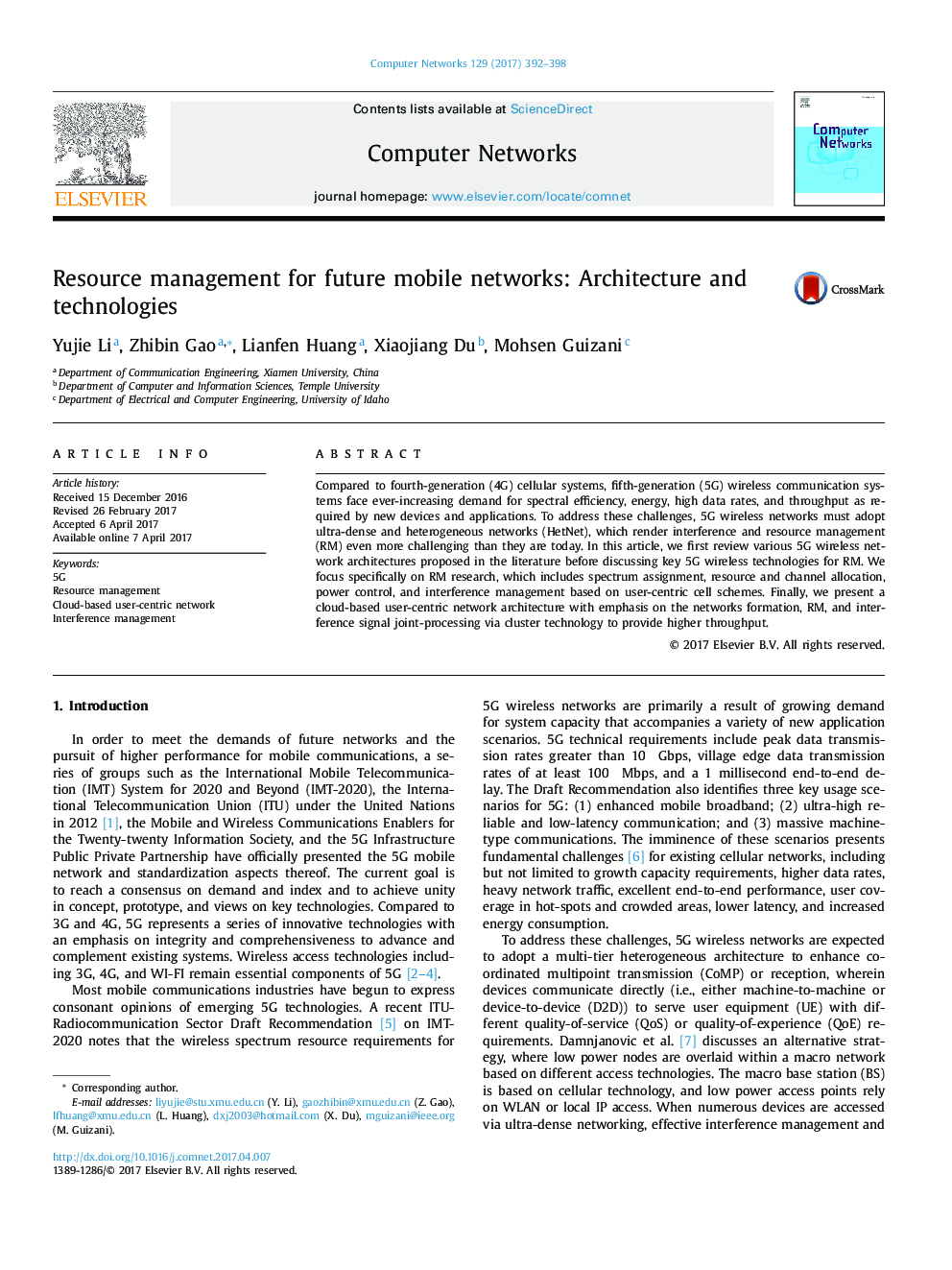| Article ID | Journal | Published Year | Pages | File Type |
|---|---|---|---|---|
| 6882830 | Computer Networks | 2017 | 7 Pages |
Abstract
Compared to fourth-generation (4G) cellular systems, fifth-generation (5G) wireless communication systems face ever-increasing demand for spectral efficiency, energy, high data rates, and throughput as required by new devices and applications. To address these challenges, 5G wireless networks must adopt ultra-dense and heterogeneous networks (HetNet), which render interference and resource management (RM) even more challenging than they are today. In this article, we first review various 5G wireless network architectures proposed in the literature before discussing key 5G wireless technologies for RM. We focus specifically on RM research, which includes spectrum assignment, resource and channel allocation, power control, and interference management based on user-centric cell schemes. Finally, we present a cloud-based user-centric network architecture with emphasis on the networks formation, RM, and interference signal joint-processing via cluster technology to provide higher throughput.
Related Topics
Physical Sciences and Engineering
Computer Science
Computer Networks and Communications
Authors
Yujie Li, Zhibin Gao, Lianfen Huang, Xiaojiang Du, Mohsen Guizani,
